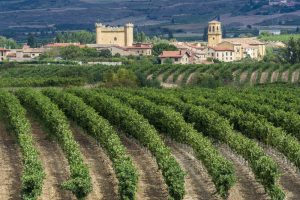Spain is a country with breathtaking landscapes, a colorful history, and a rich, complex culture in which wine has long played an important role.
Grape vines have been grown on the Spanish Iberian Peninsula since at least 3000 B.C., making it a country rich in viticultural history. Winemaking did not begin in earnest here until 1000 B.C., thanks to Phoenician traders from the eastern Mediterranean. Today, the country has more vines than any other country in the world and produces more wine than only France and Italy.
Castilla-La Mancha has the most vineyards, but the best and most famous wines come from Galicia (Rias Baixas), Catalonia (Cava and Priorat), and Andalucia (Sherry), Castilla y Leon (Rueda, Toro, and Ribera del Duero), and, of course, Rioja.
Popular Wine Regions and Grape Varieties in Spain
Spain has fewer wine grape varieties than its European counterparts. They also get far less attention because the Spanish wine industry has only recently shown any interest in varietal-led winemaking and marketing.
In terms of acreage, the most important red wine varieties are Tempranillo, Bobal, Garnacha, and Monastrell. Airen, Viura/Macabeo, Palomino, and Albarino are the most popular white wine varieties.
Rioja

Rioja is best known in Northern Spain for its berry-scented, barrel-aged red wines made from Tempranillo and Garnacha. It is widely regarded as Spain’s best wine region. It is without a doubt the most well-known, rivaled only by Jerez. The vineyards follow the Ebro River for approximately 100 kilometers (60 miles) between the towns of Haro and Alfaro.
Red Rioja wines also include Graciano and Mazuelo (Carignan) in addition to Tempranillo and Garnacha. Cabernet Sauvignon is used in small quantities by a few wineries, most notably Marqués de Riscal. White grapes are much less common.
The vineyard area in 2017 was 64,215 hectares (158,679 acres). Red grape varieties account for 91% of the plantings. Wine production has surpassed 250 million liters (66 million US Gallons).
Rioja’s traditional aging classification system (with quality implied) has had an impact on other Spanish regions. Although no legal framework has been established, the terms Crianza and Reserva appear on South American bottles on occasion.
This emphasis on aging can be attributed to early Rioja wineries’ lack of vineyard holdings. As a result, they focused on winery operations in order to promote the quality of their product.
In a more modern, and arguably international, style, many wineries now produce super-premium wine aged entirely in French oak. Because these wines are frequently the most expensive in the portfolio but may only be classified as Crianza or Reserva, they are rarely marketed with an emphasis on aging.



